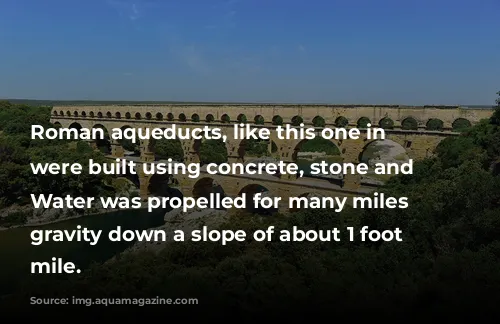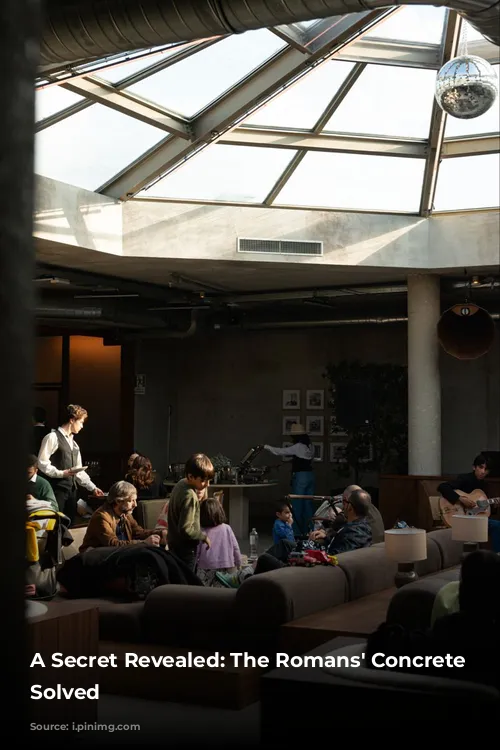Imagine a structure built almost 2,000 years ago, still standing strong today, practically untouched by time. That’s the reality of the Pantheon in Rome, boasting the world’s largest unreinforced concrete dome, constructed in the year 128 AD. This ancient wonder whispers a tale of remarkable durability, a secret that has intrigued scientists and engineers for centuries.
While modern concrete crumbles and cracks within decades, Roman concrete seems to defy the passage of time. This durability extends beyond the Pantheon, permeating ancient Roman structures across the globe. From the bathhouses of Bath, England, to the magnificent ruins of Ephesus in Turkey, Roman concrete structures remain remarkably intact, even in challenging environments like docks, sewers, and aqueducts. This longevity has been an open secret, an undeniable truth staring everyone in the face.
The Mystery of Roman Concrete
For generations, scholars have pondered the secret behind this enduring material. The prevailing explanation focused on the Romans’ use of pozzolana, a volcanic ash sourced from the region of Pozzuoli. Pozzolana, incorporated into their concrete mixtures, was believed to be the key to its strength. However, this theory couldn’t entirely explain the exceptional resilience of Roman concrete.
Modern analysis using microscopes revealed another intriguing element – tiny white mineral features, dubbed “lime clasts,” embedded within the ancient concrete. These lime clasts, composed of calcium carbonate, were initially dismissed as a sign of poor mixing practices. Yet, their presence in all samples of Roman concrete, but not in modern concrete, suggested a deeper significance.

The Unveiling of a Self-Healing Secret
This mystery, puzzling generations of researchers, was finally cracked in January 2023. A groundbreaking research collaboration between MIT, Harvard, and Swiss and Italian laboratories unearthed the secret behind Roman concrete’s remarkable longevity.
The key, it turned out, resided in those seemingly insignificant lime clasts. These “mistakes” weren’t mistakes at all, but rather the secret weapon behind the material’s self-healing properties. As cracks begin to form in Roman concrete, they tend to travel through the lime clasts. These clasts, dissolving upon contact with water, react and recrystallize as calcium carbonate, effectively sealing the cracks and preventing further damage. In essence, Roman concrete possessed the remarkable ability to heal itself automatically, a process that has been ongoing for centuries.
The Romans’ Ingenious Hot-Mix Technique
The secret behind the formation of these self-healing lime clasts lay in the Romans’ ingenious use of quicklime, a highly reactive form of lime. This ingredient, when mixed with the other components, sparked a powerful chemical reaction, generating substantial heat within the concrete mixture. This intense heat played a pivotal role, producing the lime clasts that imparted the self-healing properties.
This innovative hot-mix technique, while offering exceptional durability, had another significant advantage. The heat significantly accelerated the setting and curing process, allowing for much faster construction. A double win for the Romans!
Modern Implications: A Leap Forward in Concrete Technology
The revelation of Roman concrete’s self-healing properties has ignited a wave of excitement within the scientific community. Researchers are now exploring the potential to apply this ancient wisdom to modern concrete formulations, pushing the boundaries of durability and creating longer-lasting structures. Imagine a future where concrete buildings can effectively repair themselves, minimizing maintenance and extending their lifespan.
The discovery of this ancient secret is a testament to the ingenuity and brilliance of the Romans, whose contributions to the world continue to inspire and amaze us today. It is a reminder that even the most seemingly insignificant details can hold the key to unlocking groundbreaking innovations, and that the pursuit of knowledge often leads to unexpected and remarkable discoveries.
